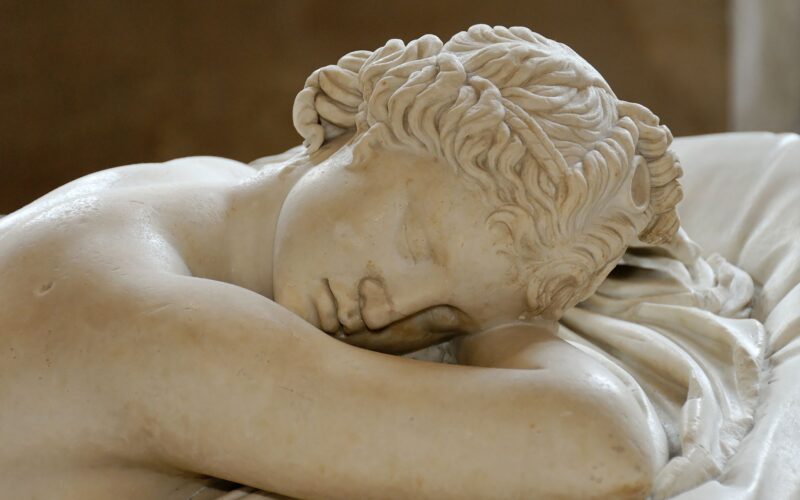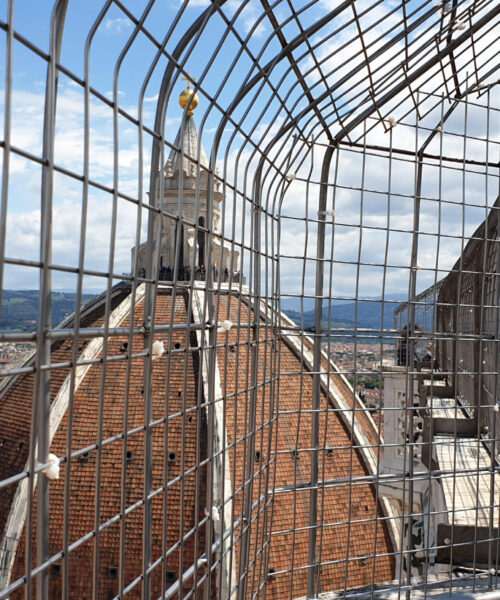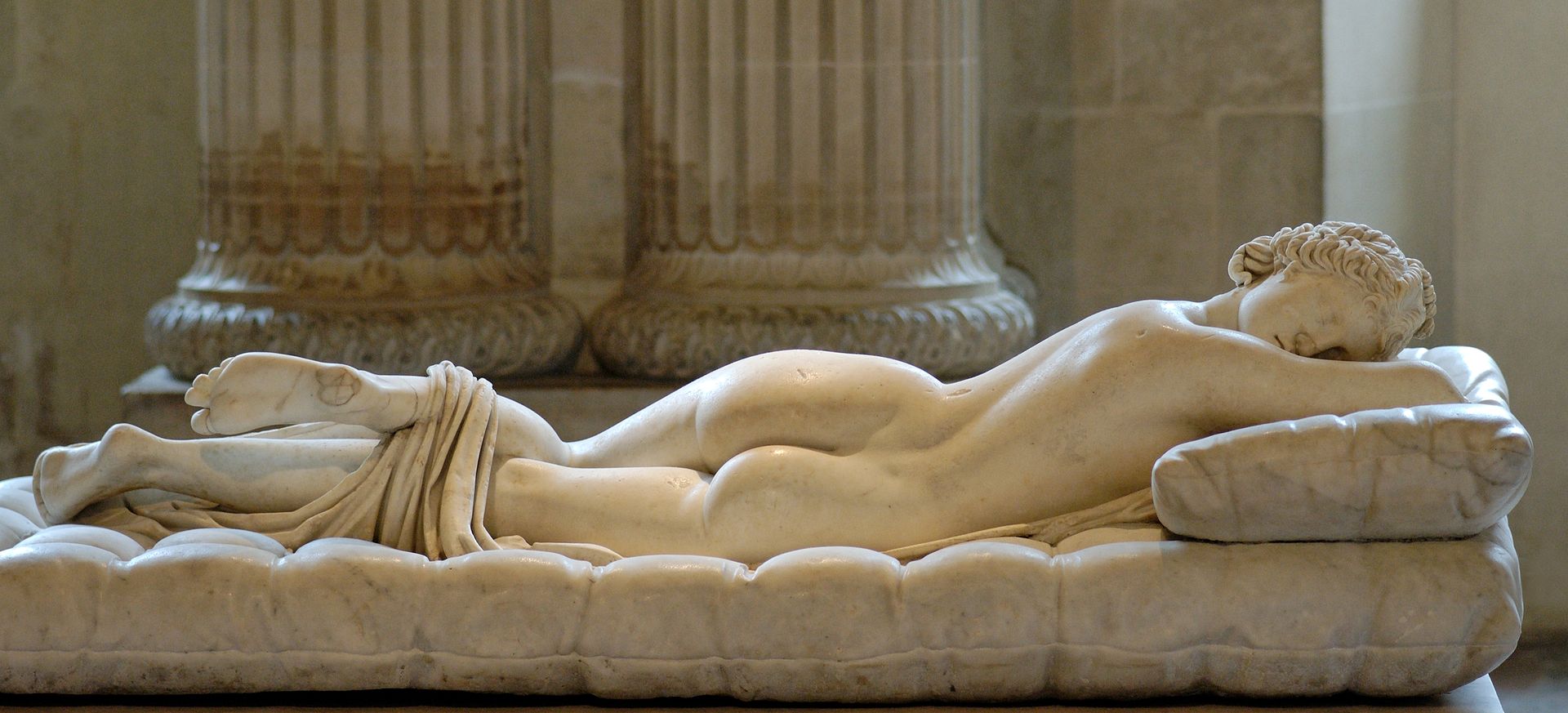
Antonio Canova, one of the greatest sculptors of neoclassicism, described Cardinal Scipione Borghese’s art collection as “The most beautiful private collection in the world.” This extraordinary collection, known today as the Borghese Gallery, is housed in the splendid villa of the same name in Rome. Among the many treasures it holds, one sculpture stands out for its grandeur and mystery of antiquity: the Sleeping Hermaphroditus.
This ancient Roman sculpture, dating around 155 BC, is a copy of a bronze original from the Hellenistic period, probably created by Polykles, known as “the Younger” to distinguish him from another artist of the same name from the 4th century BC. The statue was discovered in the early 17th century near the Baths of Diocletian, within the park of Santa Maria della Vittoria. Cardinal Scipione Borghese, captivated by this work, decided to set up a dedicated room in his villa to display it.
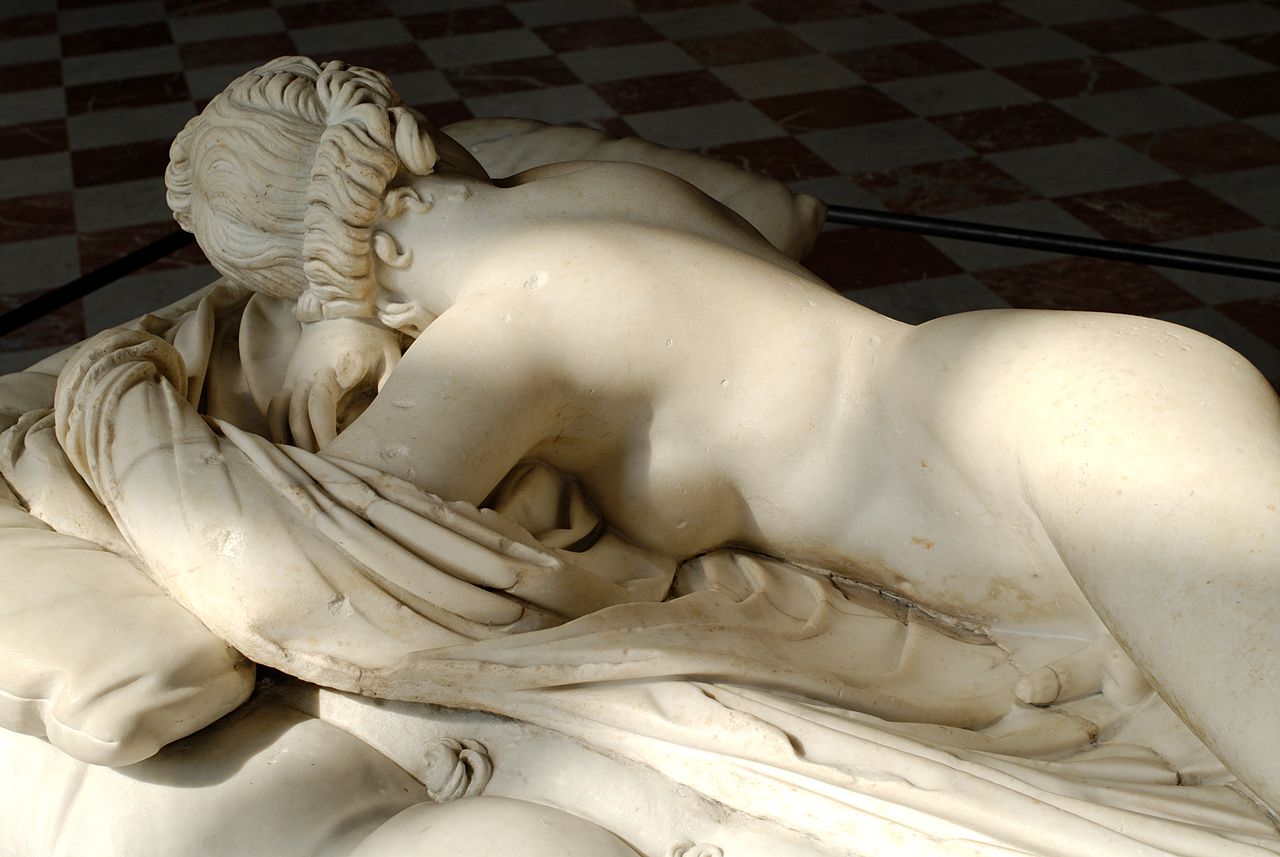
In 1620, the famous sculptor Gian Lorenzo Bernini, commissioned by Cardinal Borghese, received 60 scudi to create a marble mattress from Carrara marble to lay the statue upon. The mattress, so realistic it seems soft to the touch, is considered a masterpiece in its own right and is one of the most extraordinary examples of Bernini’s skill.
However, in 1807, Prince Camillo Filippo Ludovico Borghese, husband of Pauline Bonaparte, sold the Sleeping Hermaphroditus to Napoleon Bonaparte. The sculpture, along with many other pieces from the Borghese collection, was transferred to the Louvre, where it remains today.
The popularity of the Sleeping Hermaphroditus has generated numerous copies over the centuries. Besides the example in the Louvre, other versions of this fascinating figure exist: one remains in the Borghese Gallery, another is in the National Roman Museum at Palazzo Massimo, a third in the Uffizi Gallery in Florence, and further examples are displayed in the Vatican Museums and the Hermitage in Saint Petersburg.
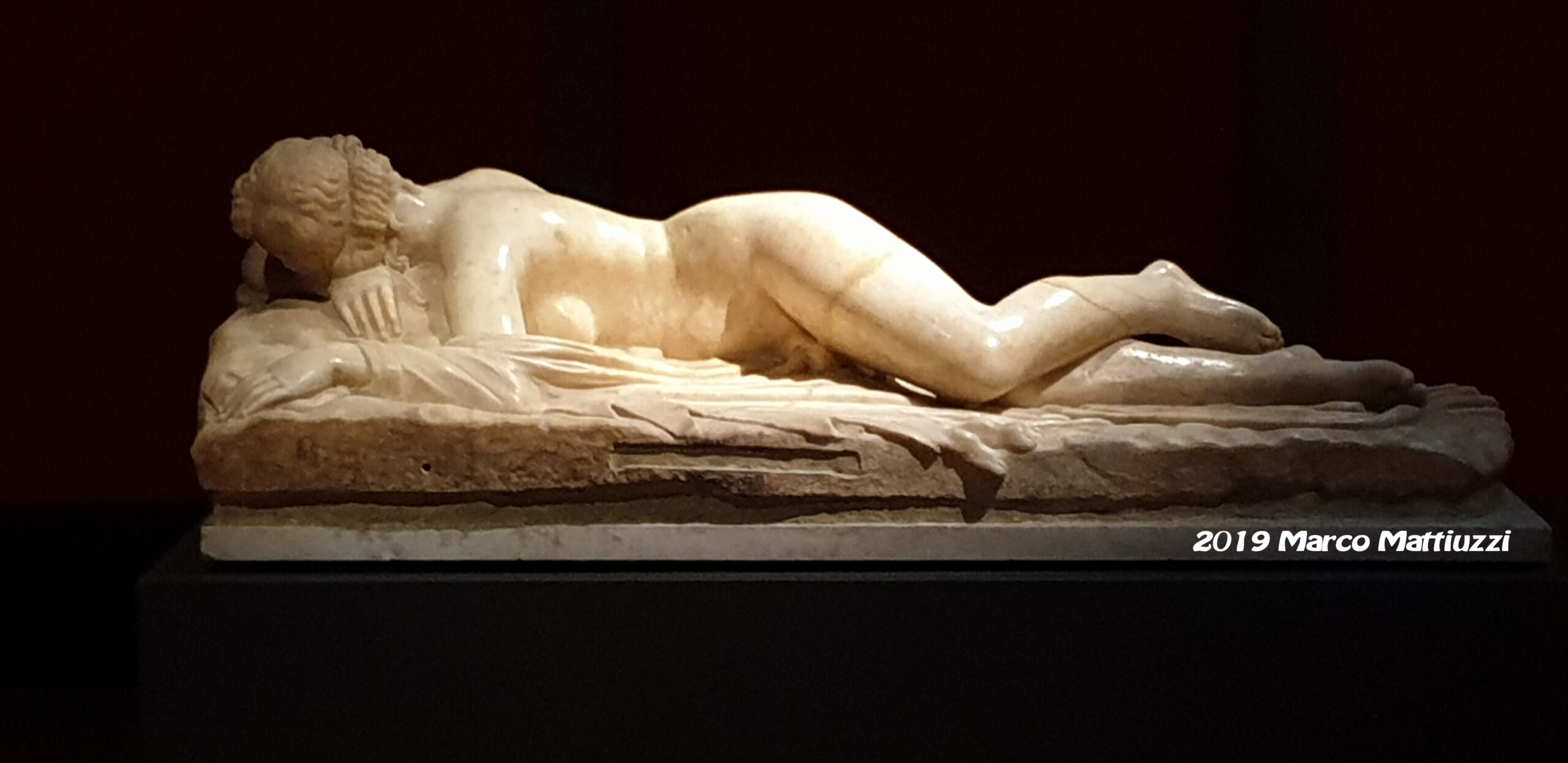
Recently, during a visit to the Uffizi Gallery in Florence, I was captivated by the copy housed in this museum. The sculpture perfectly captures the beauty and complexity of the human form, evoking a sense of tranquility and mystery that transcends the ages.
The Sleeping Hermaphroditus is more than just a sculpture; it is a bridge between the past and the present, a testament to the power of art to convey universal and timeless emotions. Visiting the Borghese Gallery in Rome or the Uffizi Gallery in Florence to admire this masterpiece is to embark on a journey through the history of art and aesthetic taste, an experience that enriches the spirit and the intellect.

